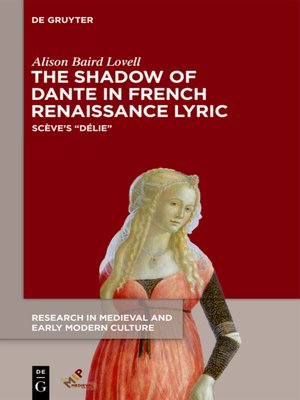The Shadow of Dante in French Renaissance Lyric
ebook ∣ Scève's "Délie" · Research in Medieval and Early Modern Culture
By Alison Baird Lovell

Sign up to save your library
With an OverDrive account, you can save your favorite libraries for at-a-glance information about availability. Find out more about OverDrive accounts.
Find this title in Libby, the library reading app by OverDrive.



Search for a digital library with this title
Title found at these libraries:
| Library Name | Distance |
|---|---|
| Loading... |
This book presents an interpretation of Maurice Scève's lyric sequence Délie, object de plus haulte vertu (Lyon, 1544) in literary relation to the Vita nuova, Commedia, and other works of Dante Alighieri. Dante's subtle influence on Scève is elucidated in depth for the first time, augmenting the allusions in Délie to the Canzoniere of Petrarch (Francesco Petrarca). Scève's sequence of dense, epigrammatic dizains is considered to be an early example, prior to the Pléiade poets, of French Renaissance imitation of Petrarch's vernacular poetry, in a time when imitatio was an established literary practice, signifying the poet's participation in a tradition. While the Canzoniere is an important source for Scève's Délie, both works are part of a poetic lineage that includes Occitan troubadours, Guinizzelli, Cavalcanti, and Dante. The book situates Dante as a relevant predecessor and source for Scève, and examines anew the Petrarchan label for Délie. Compelling poetic affinities emerge between Dante and Scève that do not correlate with Petrarch.







